Loch flies
{{start}}
Loch Style fly-fishing involves fly-fishing from a boat, side onto the wind, using a system incorporating one or a number of flies. There are both wet and dry lock style fishing techniques. There are four distinct sub sections of loch flies: wake or bob flies, dropper flies that can be placed in various position s in a team of flies for different effects, attractor flies which are generally fished on a middle dropper and point flies.
The dry fly technique involves casting out in the direction of the drift, stopping the cast above the water so as to let the team of flies settle, waiting the desired time (often only 5 to 10 seconds) and then repeating the process in a slightly different position. Dry fly Loch style fly fishing covers a lot of water in a short time. The flies used are ordinary dry flies such as those shown in the dry fly page of this website. When selecting a team of flies try to balance the selection so that the most aerodynamic fly is on the point and the least aerodynamic fly is on the top dropper.
The wet technique involves casting out in the direction of the drift, fishing the flies using a range of techniques. Wet fly loch fly fishing, as well as incorporating a range of different retrieves and fly lines ranging from floating right through to very fast sinking lines can also involve fishing: the drop, the retrieve, the stop, the lift, the hang and the dibble and the dapple.
{{end}}
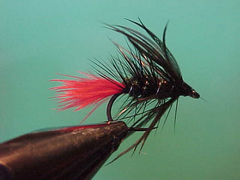
{{+1}}Zulu – Chatto’s variants{{-1}}
{{start}}
I have changed the materials from the originals to include a couple of my fly tying favorites namely marabou for the tail, peacock herl for the body and a crow breast feather up front. If you swap the front feather to a blue feather such as swamp hen or a smallish peacock breast feather you have the also popular blue Zulu.{{end}}

{{+1}}Sunset fly{{-1}}
{{start}}
I am confident that my tie is nothing like the original tie, but in my defense many years ago, when I first wanted to tie this fly, a search of all my reference books just didn't uncover a copy of the original tie. My tie of this fly is however quite easy and delivers a useful and robust fly.{{end}}
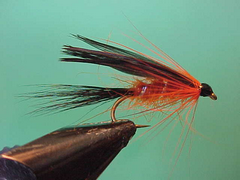
{{+1}}Scotch Poacher{{-1}}
{{start}}
A New Zealand fly tied with an overlaid wing and tied as an evening fly to imitate their freshwater crayfish known as Koura. The preferred fishing technique in New Zealand is to fish it slowly along the bottom. It certainly works well when fished that way in Australia but it has also found its way into may Australian Loch fly boxes as a dropper fly for waters where orange is a good trigger colour and mudeyes or yabbies are on the move.{{end}}
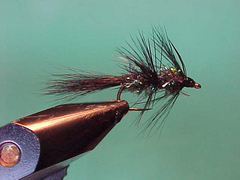
{{+1}}Fuzzy Wuzzy{{-1}}
{{start}}
Originating in New Zealand in the 1930's this fly was first dressed in colours of black and red and was designed as an evening or night fly representing a local crayfish. The fact that it is highly visible and symmetrical has allowed the Fuzzy Wuzzy to evolve into a must have fly with applications across a wide range of situations.{{end}}
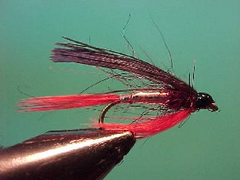
{{+1}}Bloody butcher – Chatto’s variant{{-1}}
{{start}}
Most English wet flies of this type were originally tied as imitations of specific impoundment bait fish or to simply gain the interest of fish and illicit a strike. I have tweaked the original recipe by adding a thorax of claret seals fur. That breaks the harsh lines of the original tie and adds a little bit of extra movement.{{end}}
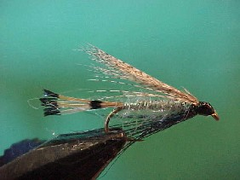
{{+1}}Blue & teal variant{{-1}}
{{start}}
A variant of a old English wet fly this variant is in the same class as an Alexandra this fly as an attractor fly particularly when rainbows are the target. It is different to the original in that the dyed blue hackle has been replaced by blue barbells from the chest feathers of a male peacock and the body is "Glamor" thread fuzzeled with silver UV dubbing.{{end}}
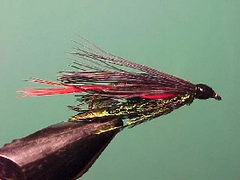
{{+1}}Alexandras – Chatto’s variant{{-1}}
{{start}}
Its a fly that has withstood the test even though it was apparently banned for a time in Scotland where it was developed because it was just too effective. It remains effective today and is an excellent middle dropper attractor type fly or tip fly when fishing for fast moving rainbow trout. My version is tied inverted making it much more stealthy.{{end}}
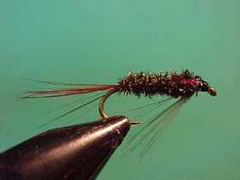
{{+1}}Diawl bach{{-1}}
{{start}}
I normally fish smaller sizes as a midge pupa and from time to time use larger sizes as a point fly in a team of wet flies on a floating or intermediate line. I tie it both with and without weight and find the addition of a small black tungsten bead makes it a handy anchor fly or a good prospecting fly in running water.{{end}}
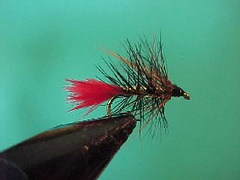
{{+1}}Doobry variants{{-1}}
{{start}}
Although I have never seen a natural of these colours these fly remain useful dropper flies. I lean toward to two red versions when midge are around and the green version works well in waters when midge are around but stick caddis and sand caddis are also on the menu.{{end}}

{{+1}}Blae & black – Chatto’s soft hackle version{{-1}}
{{start}}
The Mallard & Claret was the first for me in this series. Whilst it has been tweaked at the edges a little this Mallard & Claret pattern remains remarkably similar to the original fly pattern that has its origins in England some 500 odd years ago except for the introduction of a fuzzeled body rather than a hackled body and a soft wing instead of feather slip wings.{{end}}













